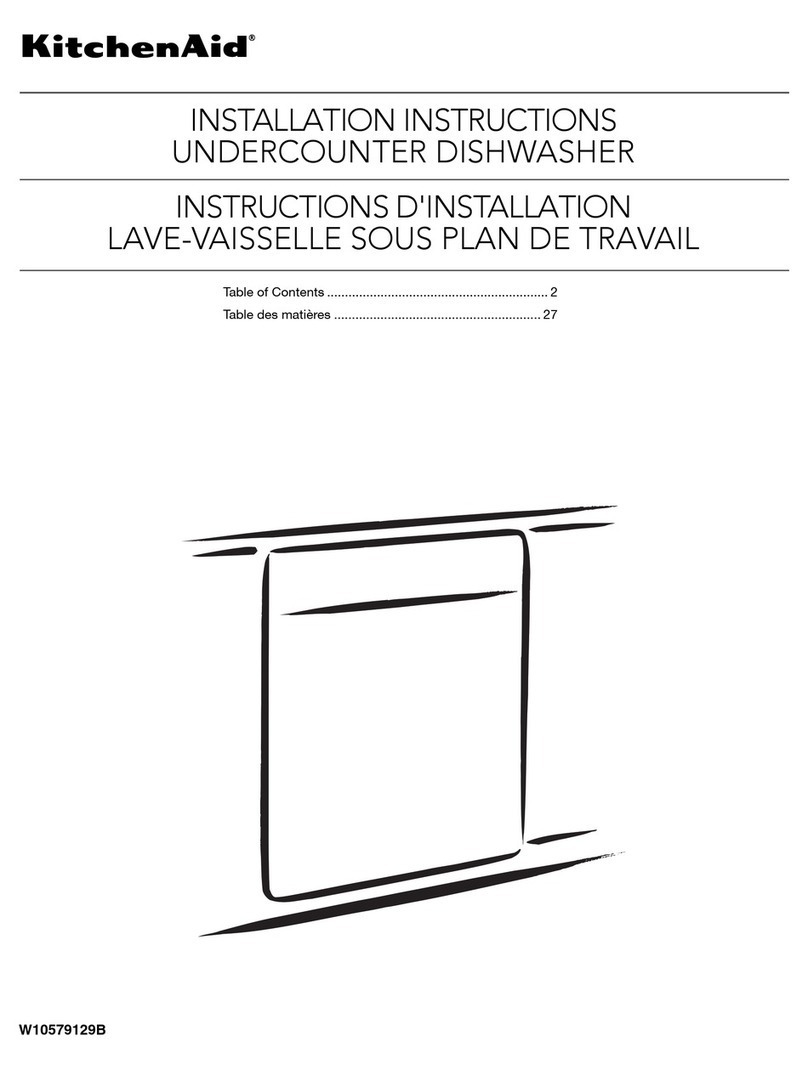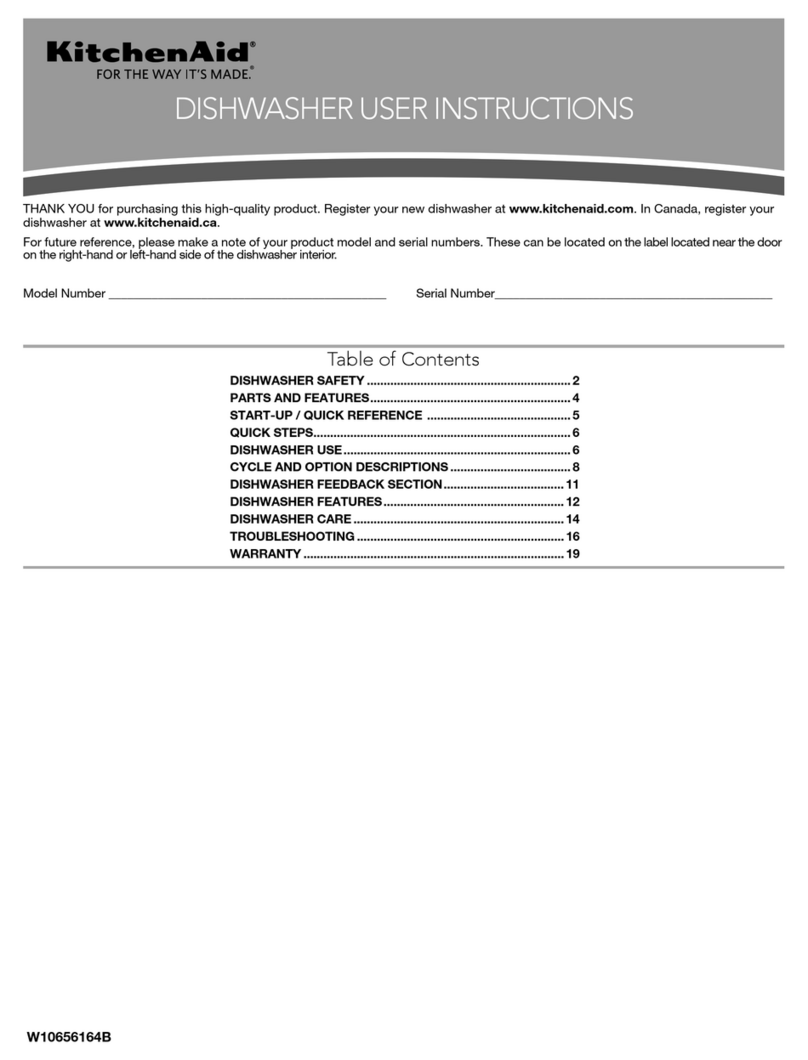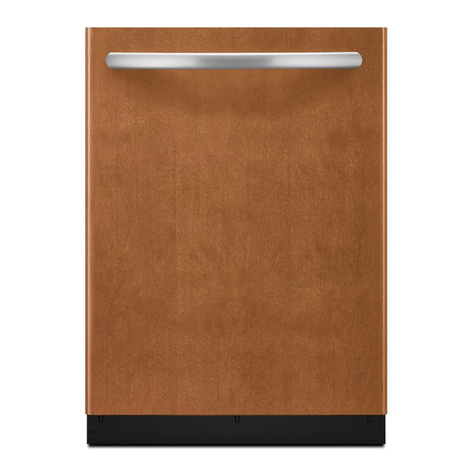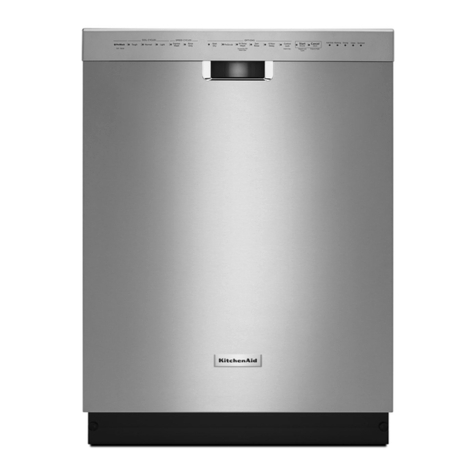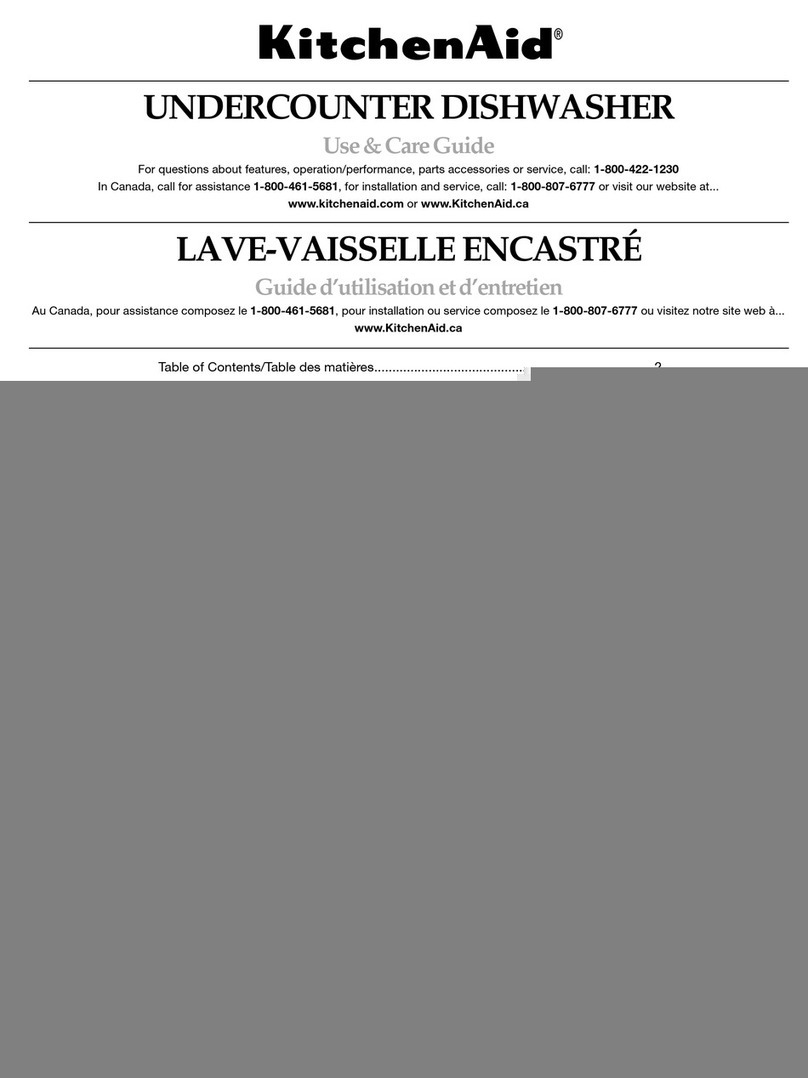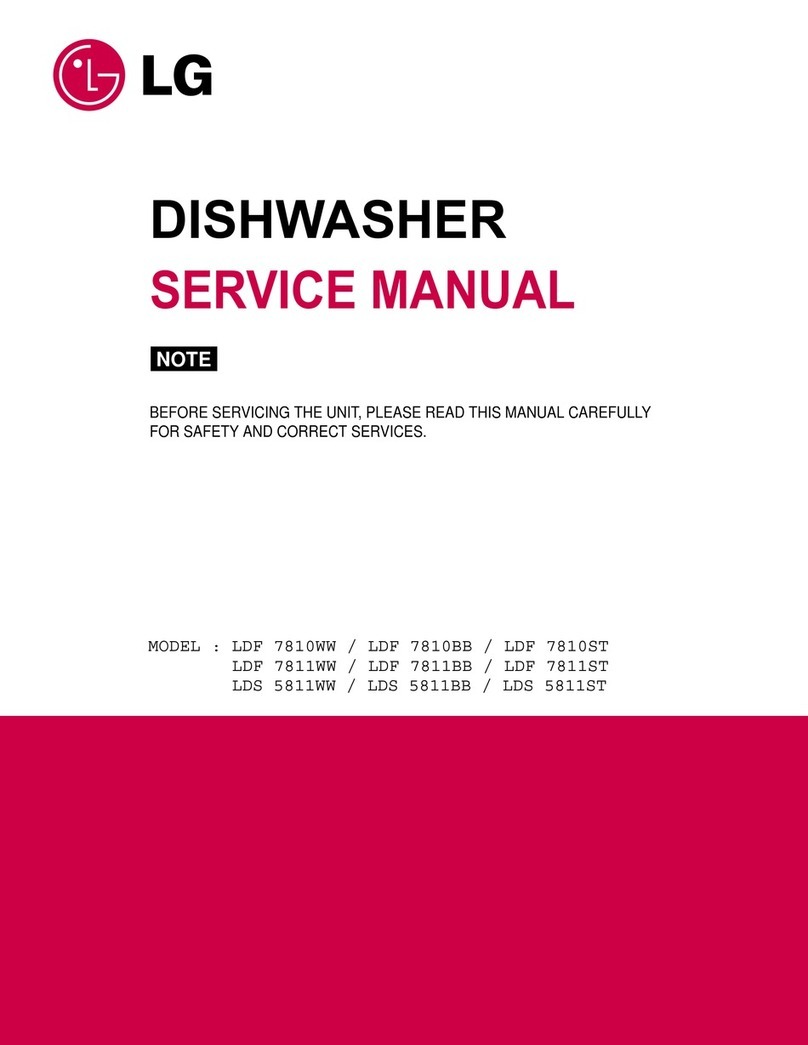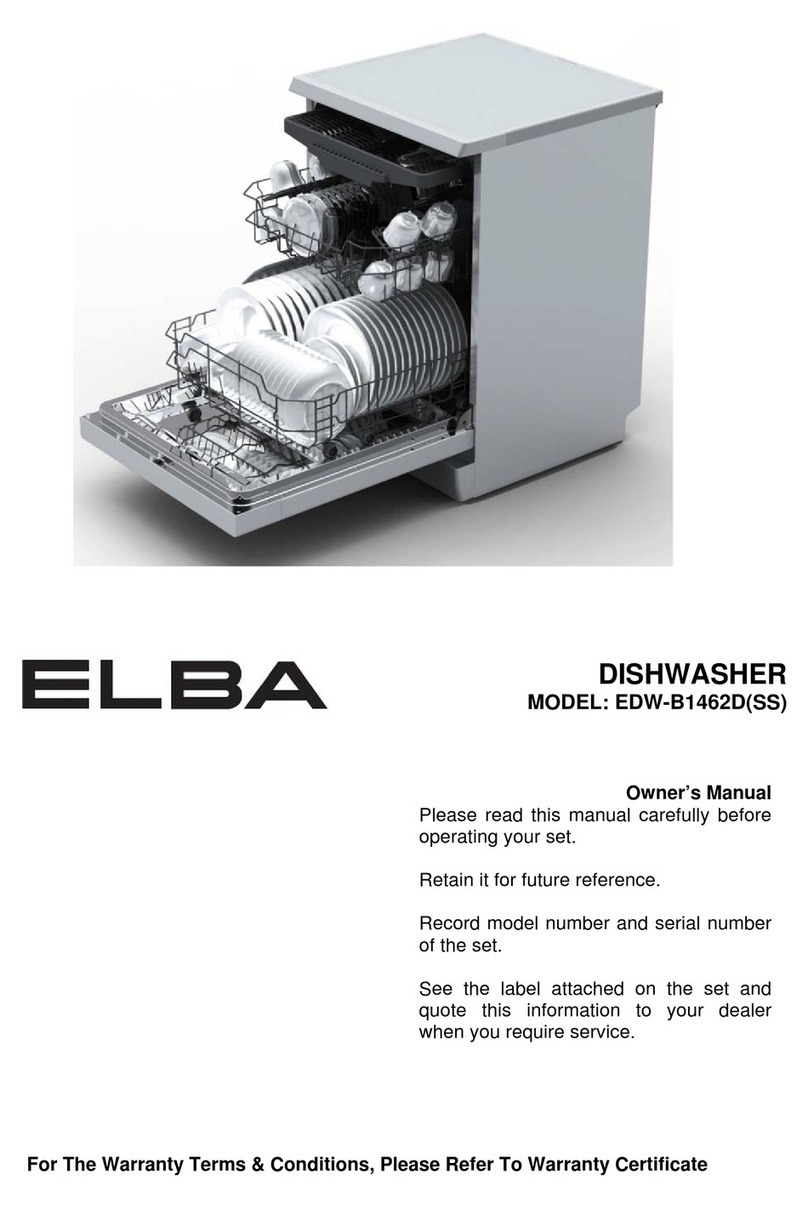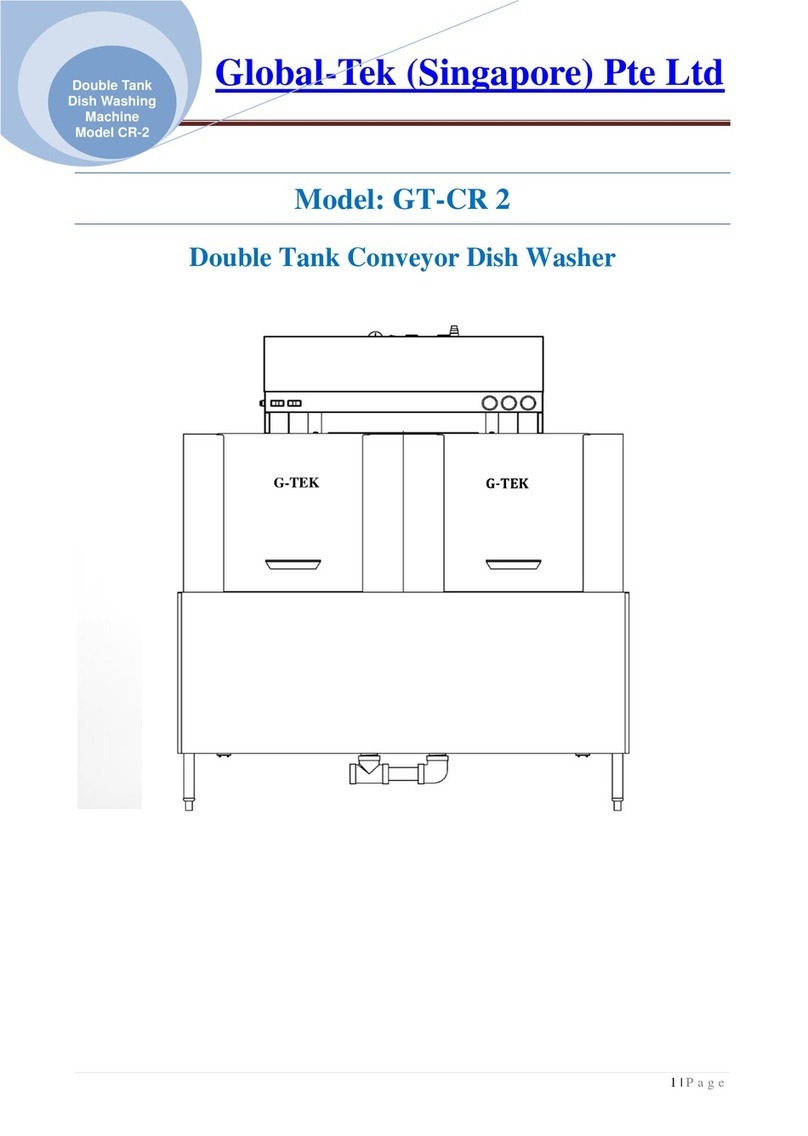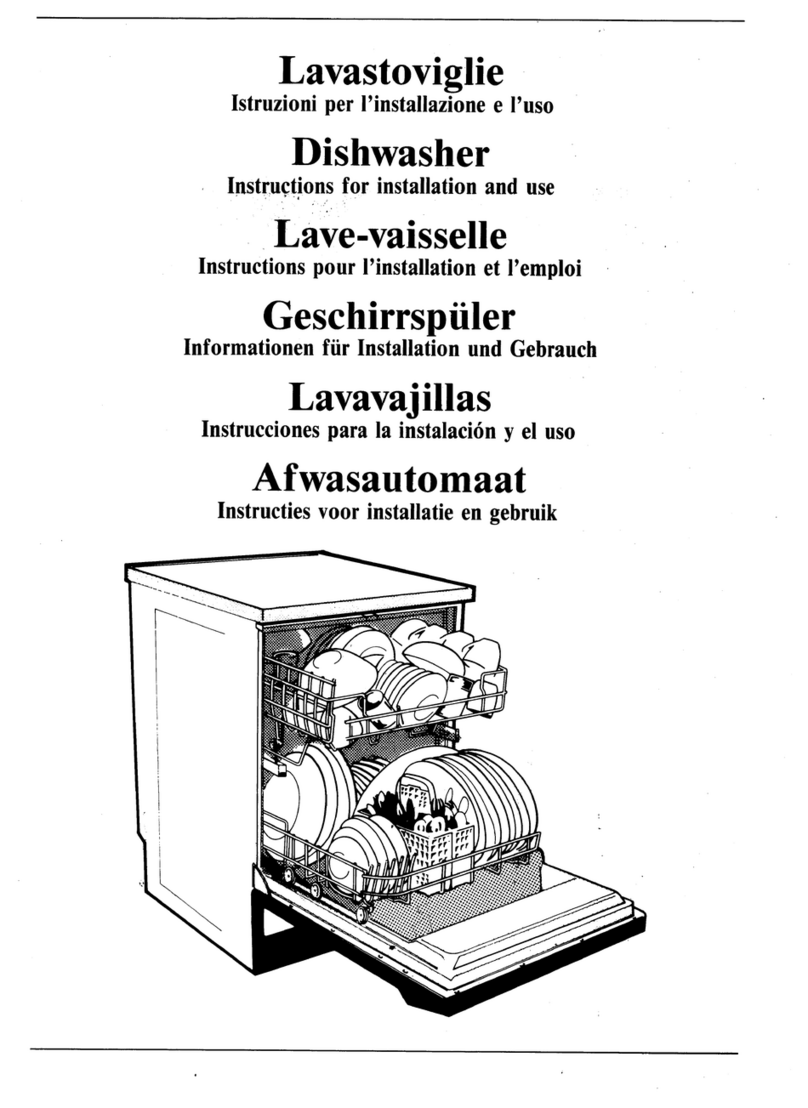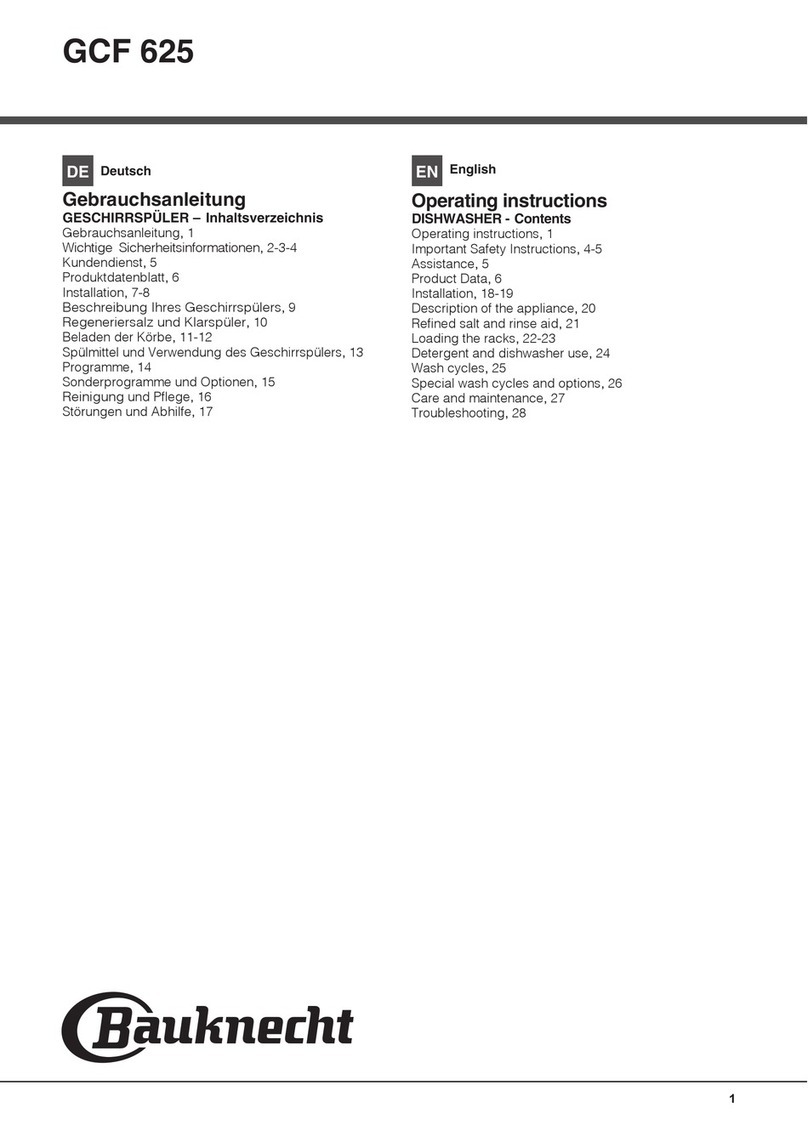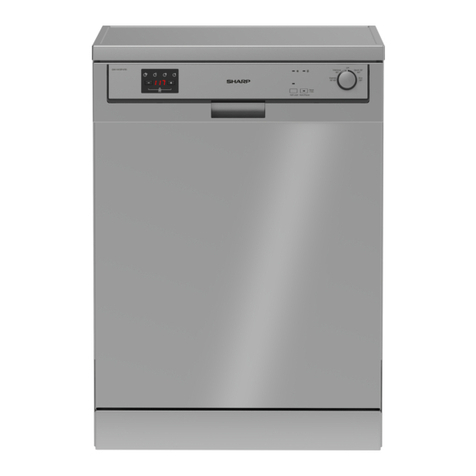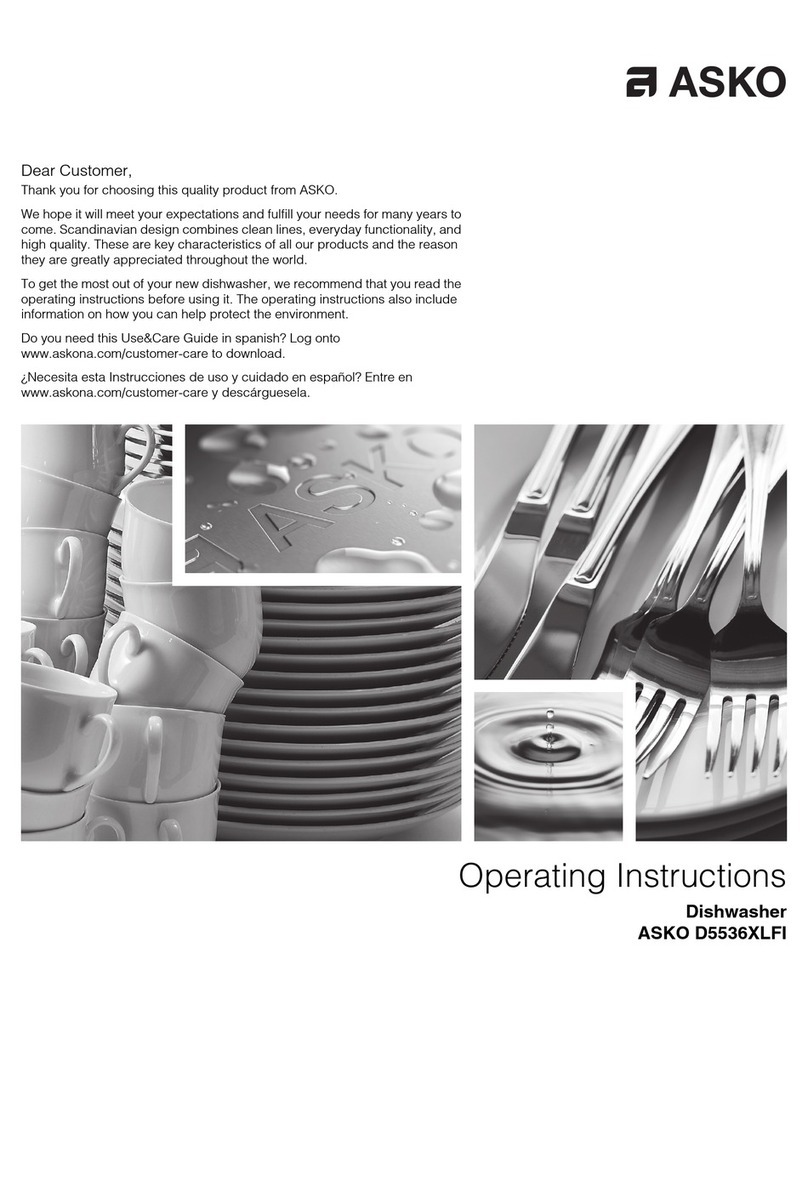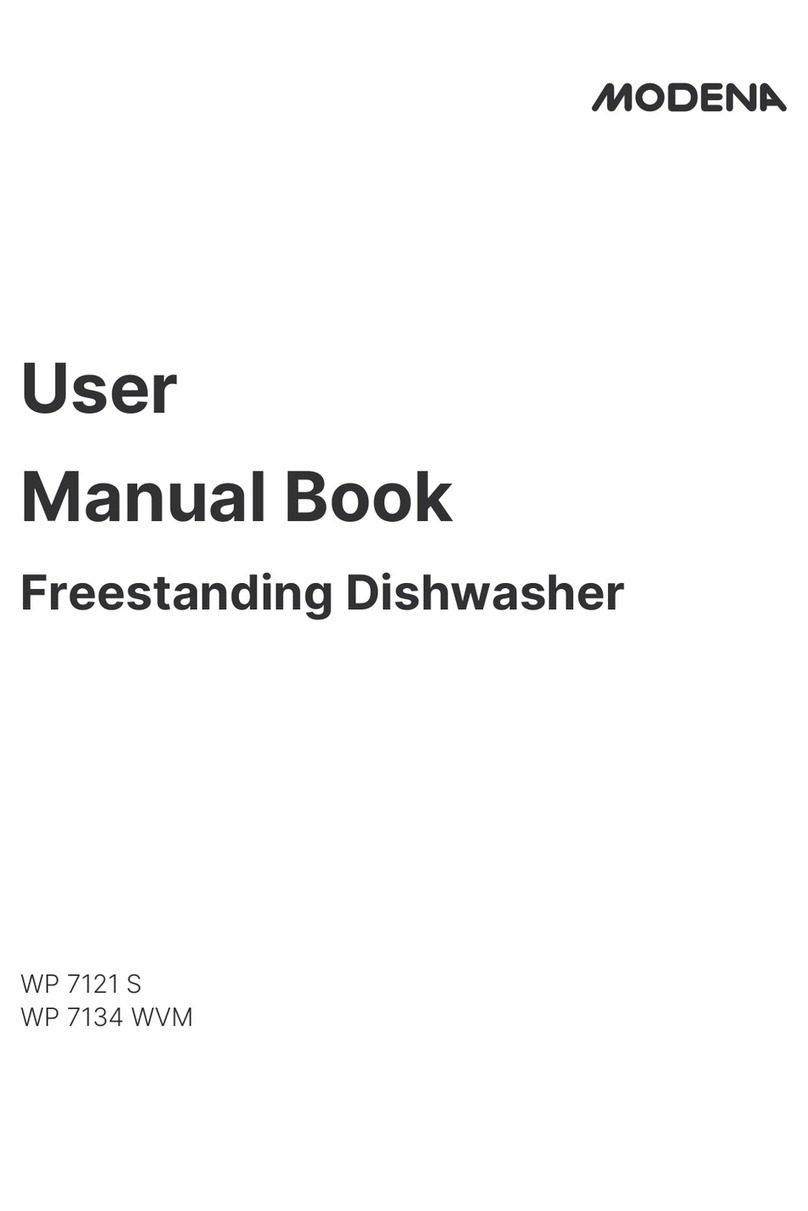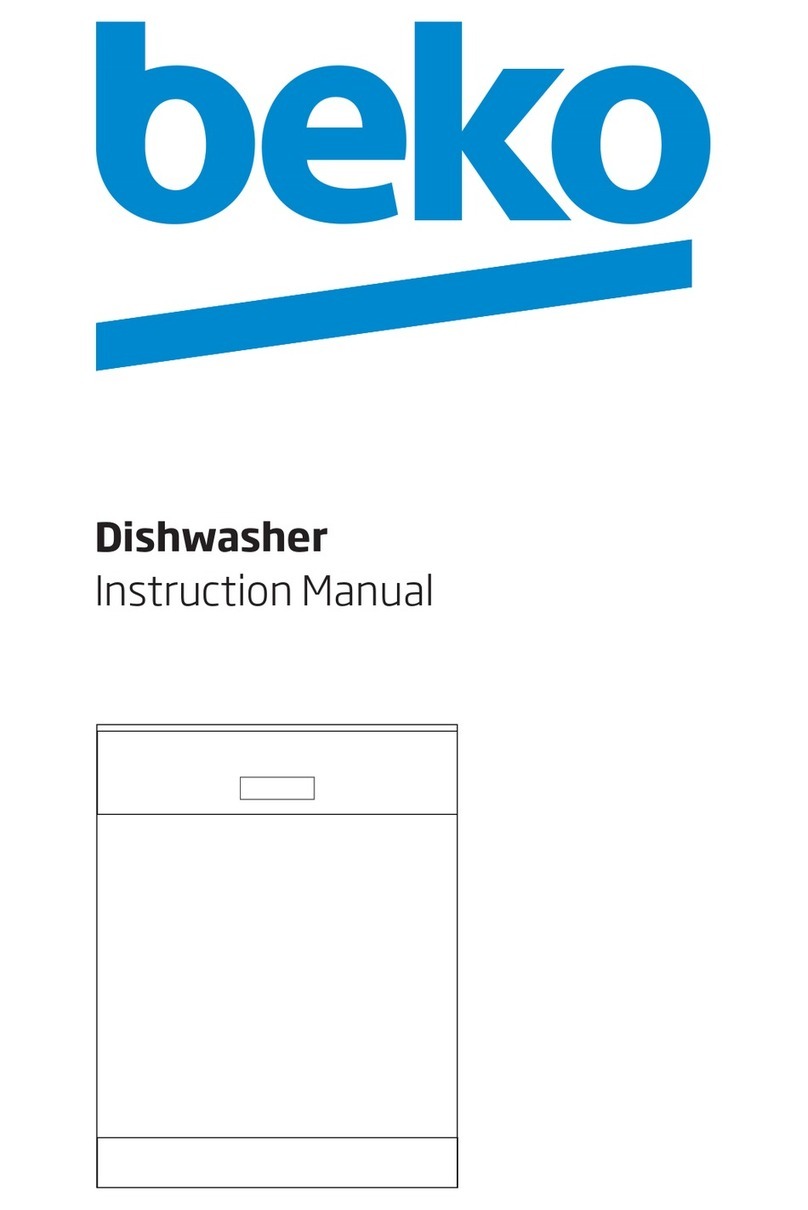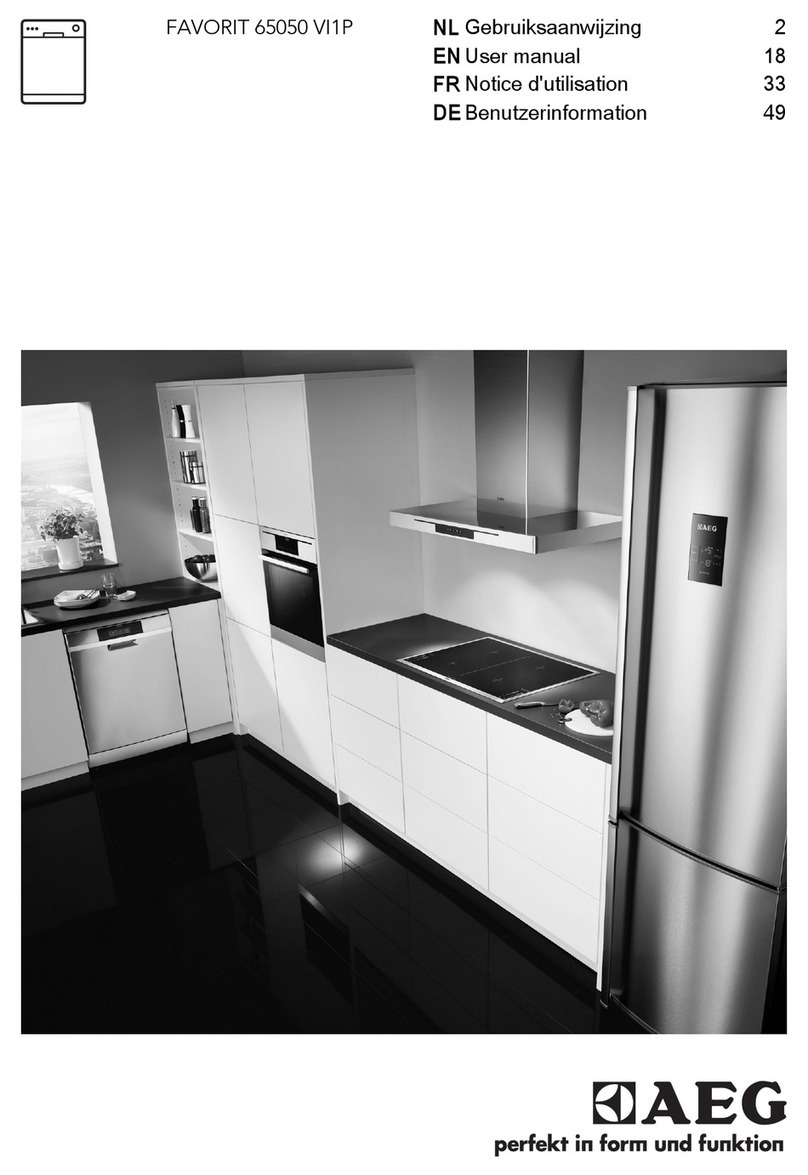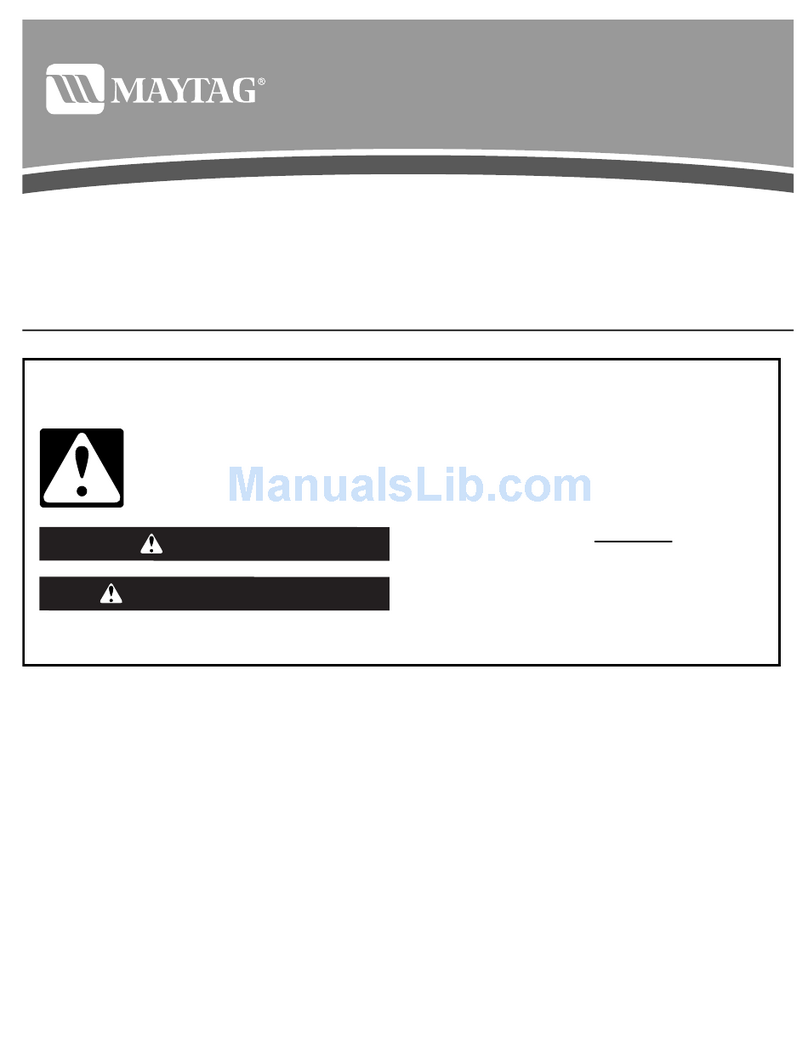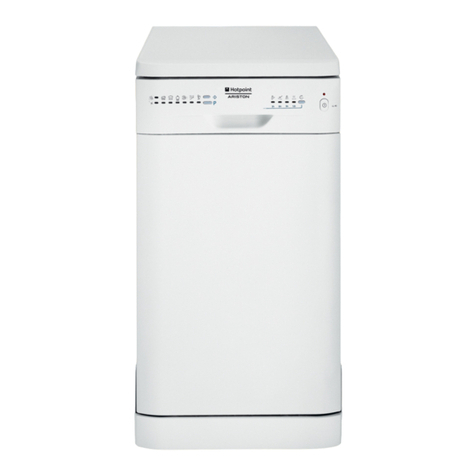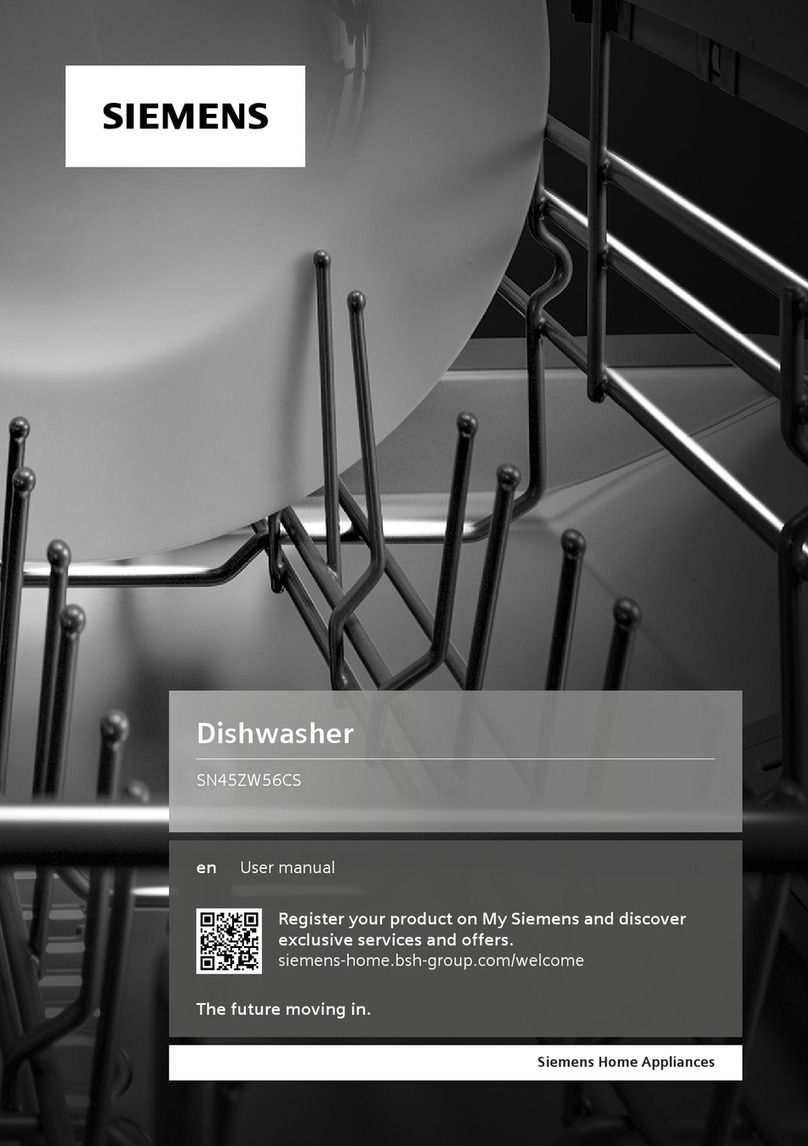Hotwaterdissolvesandactivatesthedishwashingdetergent.
Hotwateralsodissolvesgreaseondishesandhelpsglassesdry
spot-free.Forbestdiehwashingresults,watermustbeatleast
120°F(49°C)asitentersthedishwasher.Loadsmaynotwashas
wellifthewatertemperatureistoolow.
Tocheck water temperature
1. Run hot water at the faucet closest to your dishwasher for at
least 1 minute.
2. Place a candy or meat thermometer in a glass measuring
cup.
3. Check the temperature on the thermometer as the water is
running into the cup.
4. If the water temperature at the faucet is below 120°F (49°C),
have a qualified person raise the water heater's thermostat
setting.
• To save water, energy and time, do not rinse dishes before
putting them into the dishwasher.
• Use the Normal cycle whenever possible. This cycle uses
less hot water and energy than other cycles.
• Use a delay feature (on some models) to run your dishwasher
during off-peak hours• Local utilities recommend avoiding
heavy usage of energy at certain times of day.
• During the summer, run your dishwasher at night. This
reduces daytime heat buildup in the kitchen.
• Use an air dry, or an energy-saving dry option whenever
possible. Allow longer drying times (overnight) when using
these options. Use a rinse aid to improve drying.
• Use cycles or options that add extra heat to the wash or rinse
portion of the cycle only when needed.
• Run your dishwasher with full loads. Run a rinse cycle after
meals until the dishwasher is full.
Select the wash cycle and options desired. Or press START to
repeat the same cycle and options as the previous cycle.
NOTE: If the last cycle you completed was a rinse cycle, the
dishwasher will run the last full wash cycle and options that you
selected when you press Start.
• If the power is off or the door is open for an extended period
of time, the Start button memory will default to the Normal
cycle with heated drying.
• If you do not run the dishwasher daily, close the door to
maintain memory.
A "O" shows what steps are in each cycle.
Temperatures indicate where extra heat is added.
Water usage is shown in U.S. gallons/liters.
This model meets the ENERGY STAR_guidelines for energy
efficiency.
Cycle time includes dry time. An asterisk ( * ) by the cycle time
indicates the cycle time might be longer depending on the
temperature of the water entering the dishwasher. The cooler the
water, the longer the cycle time. If the water is already hot
enough, the cycle time will be as shown.
Heavy Use this cycle for iI
heavily-soiled pots,
pans, casseroles ......... ':
regular tableware and Use both detergent
harder than normal dispenser sections,
water conditions•
Pre- Main Rinse Rinse Final Dry Time Water
Wash Wash Heated (min) Usage
Rinse (gaUL)
€ • • • € 89*
130OF 140°F 140°F
(54°C) (6O°C) (6O°C)
6.9/26
Normal Use this cycle for loads .... = ,
with normal amounts of
food soil. (The energy- __ ;
usage label is based on Use both detergent
this cycle.) dispenser sections.
Pre- Main PurgetRinse Final Dry Time Water
Wash Wash Heated (rain) Usage
Rinse (gaUL)
• • •
120°F 140°F
(49°C) (60°C)
•79* 5.5/21
Rinse.,,_ rinsingUSethiSdishes,rinsecycleglasses,fOr"--w:'L JI
vnty , !
and silverware that will i :L.J I
_ not be washed right Do not use detergent
away. with th s cyc e.
Pre- Rinse Main Rinse Final Dry Time Water
Wash Wash Heated (rain) Usage
Rinse (gaUL)
•10 1.8/7
I
A small amount of water is run through the pump to remove
soil )articles between the main wash and final rinse.
Anytime during a cycle, press
O
CANCEL/DRAIN glows. The dishwasher starts a 2 minute drain (if
needed). Let the dishwasher drain completely. The light goes off
when the dishwasher finishes the drain.
To stop the drain
You can press Cancel/Drain again to stop the drain immediately.
Remember to drain the dishwasher before starting a new cycle.
To clear the indicators
Press Cancel/Drain before starting the dishwasher to clear all
options and cycles.
10




